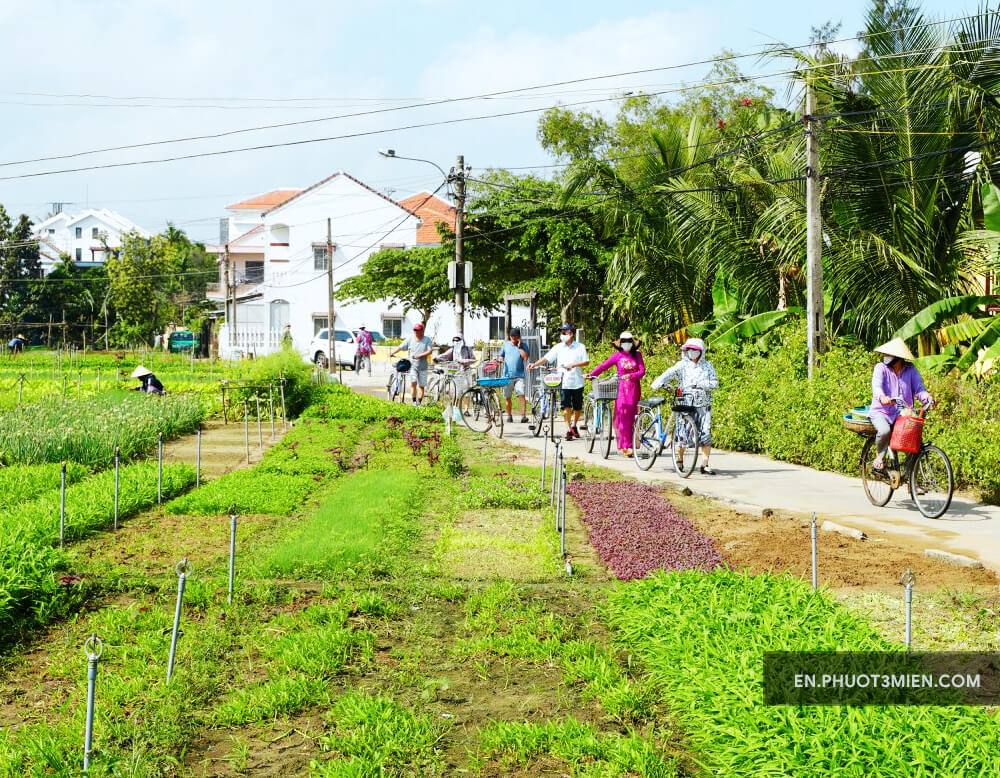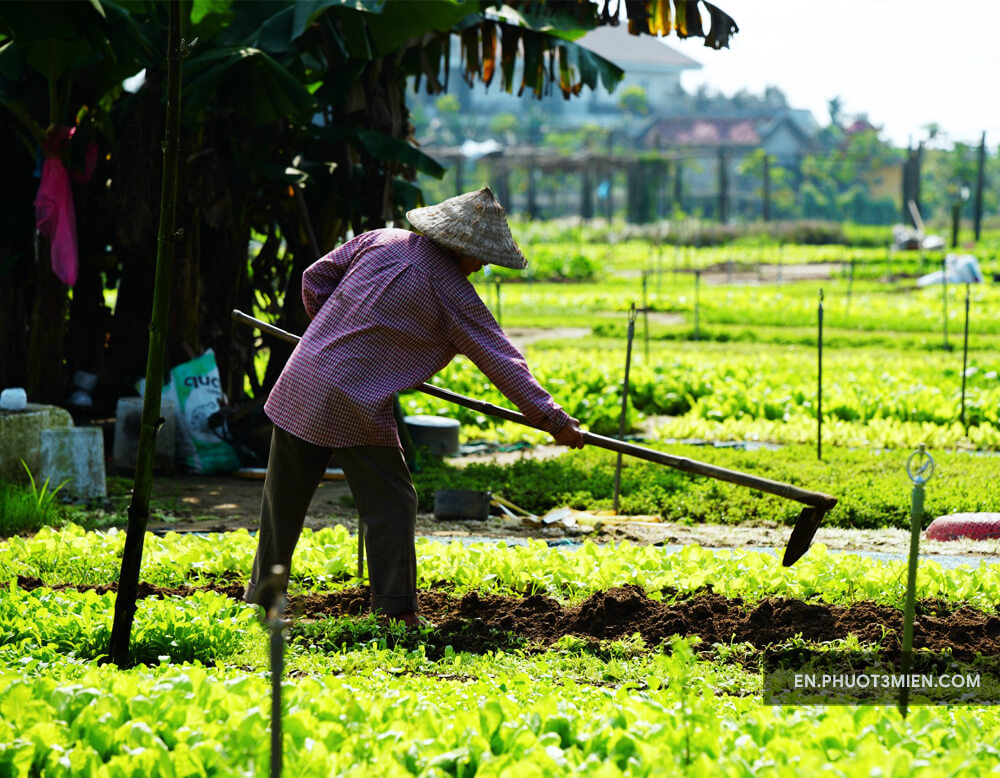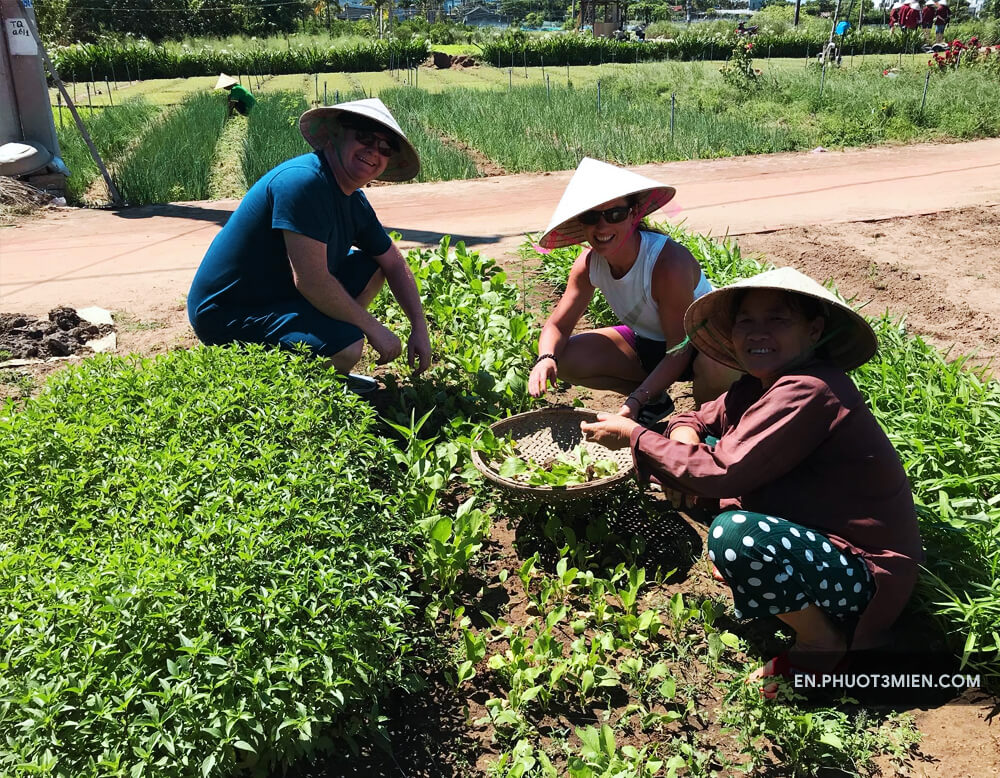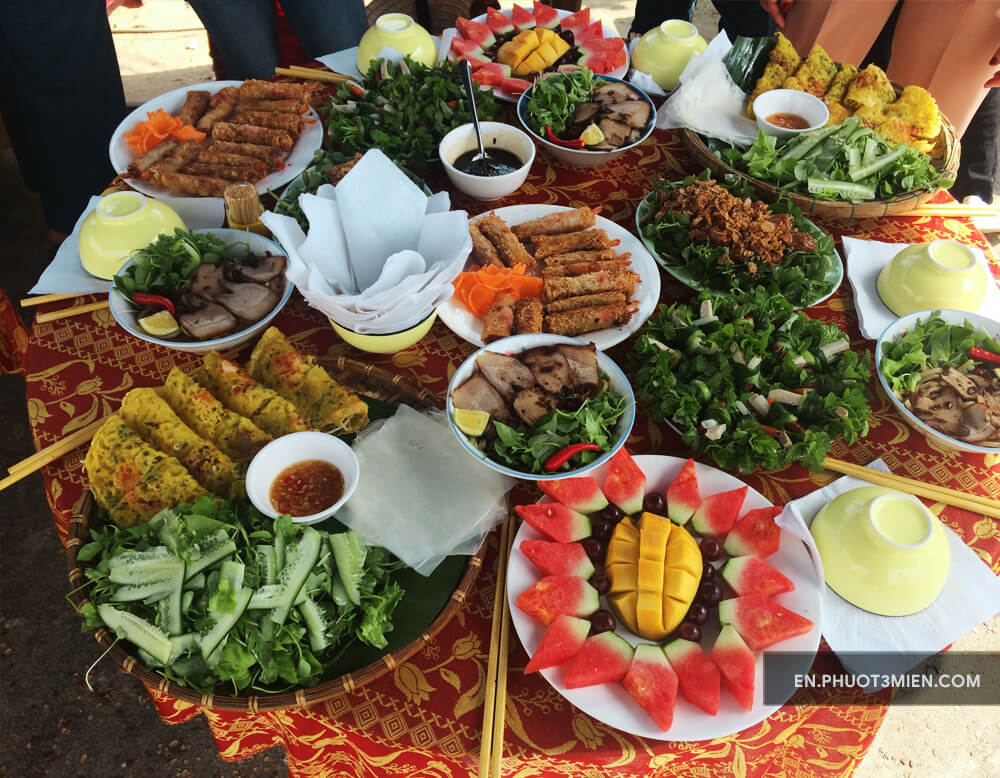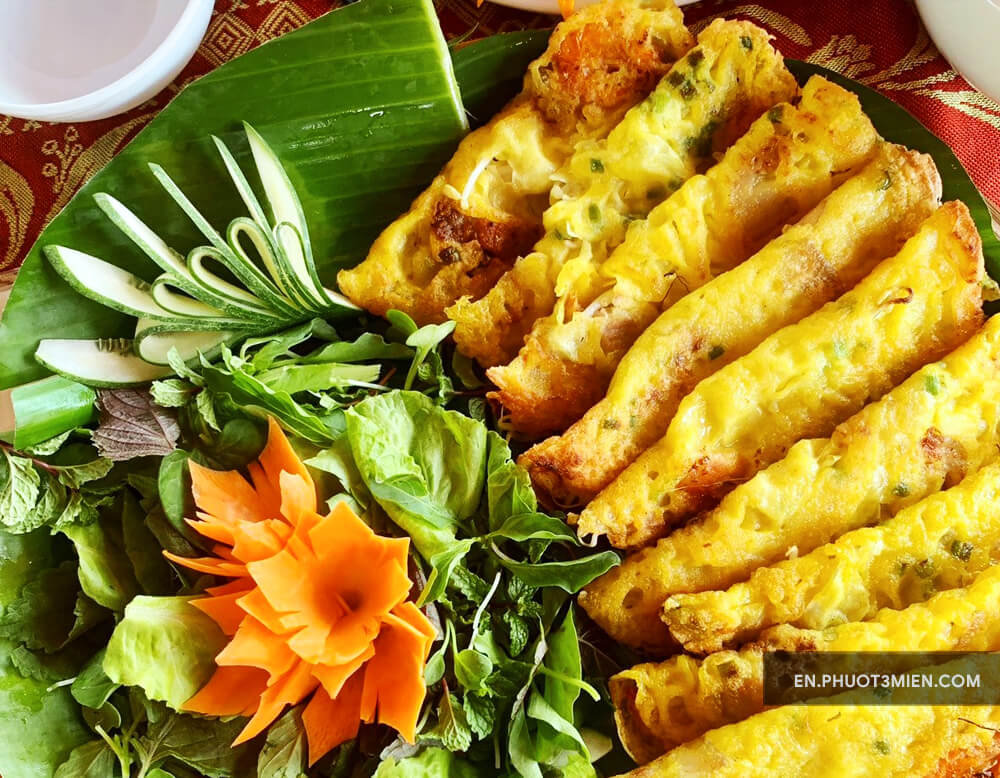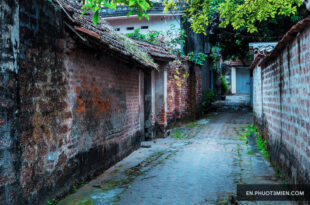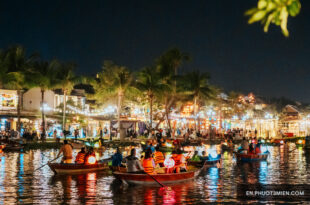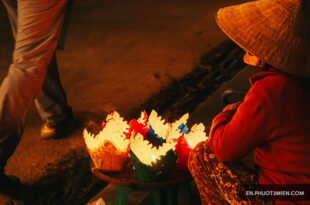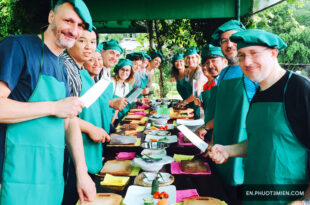Im will has come up with the best itinerary for you to experience the real village lifestyle in Tra Que, Hoi An.
Contents
- A Glimpse of Hoi An and Tra Que Village
- A Deeper Look into the Tra Que vegetable Village
- Detailed itinerary to visit Tra Que village
- Next on your itinerary is water buffalo riding
- Your farming lesson will continue after you finish your buffalo ride
- The grave of Tani Yajirobei
- End of tour Tra Que Vegetable Village
A Glimpse of Hoi An and Tra Que Village
Hoi An in central Vietnam is one of those places that everyone raves about, and for good reason. The Ancient Town is absolutely magical, and it’s hard to deny the charm and beauty that comes with its old yellow tea houses and lantern-lit alleyways. Hoi An is also a coastal city boasting beautiful sandy shores blending perfectly with blue waters. And then between the town and the coast, there is Tra Que vegetable village, a location often overlooked by tourists.
Located three kilometers away from the center of Hoi An, Tra Que, with its lush grassland, marvelous rice fields, and tranquil lakes, is well-known as the only freshest and cleanest vegetable supporter for Hoi An. It is one of the most beautiful rural areas of Vietnam.
A Deeper Look into the Tra Que vegetable Village
I’m has been offering amazing article around the country, giving tourists and locals alike the real Vietnam experience. Our most recent addition to our brochure: The Hoi An Village. On this article I’m share allow our viewer to really experience what the Vietnam countryside is like while at the same time allowing them to escape momentarily from the busy city life. It really is the perfect getaway.
Normally we prefer to do our tours on motorbikes, as they are the dominant form of transport in Vietnam. And to really feel like a local, you gotta do as the locals do. But for this one, we will, we will leave the motorcycles behind for a change and get on bicycles instead – the kind that you can peddle. This is undoubtedly the best way to see Tra Que village – at a slower pace, without the sound of engines, and with the fresh countryside, breeze brushing only gently past your face.
Tra Que, named so by one of the Nguyen Lords during the Nguyen Dynasty, is the most famous organic vegetable village in Vietnam. It is where all the delicious and healthy vegetables and herbs found in dishes served throughout Hoi An are grown, and what makes Tra Que village extra special is that no chemicals are used in the farming process. This guarantees the best quality of the plants grown here. With these two facts alone, you can see why the vegetables grown here bring valuable meaning to the local people.

The village covers about 40 hectares, and is home to about 200 local farming families. As you cycle through the village, you will get to witness the local farmers going about their day – cultivating, growing and harvesting various plants with love and care. There are approximately 40 kinds of vegetables and herbs grown in neat rows here, some of which you must be well aware of, such as coriander, basil, chives, mint, lettuce, dill, morning glory, shallots, lemongrass, papaya, parsley, avocado, spinach, cucumber, and spring onion to name a few. Many of these are common ingredients found in a wide array of dishes served throughout Vietnam, and not just in Hoi An. Once harvested, the veggies and herbs are delivered early morning to markets and restaurants to be used in dishes.
Detailed itinerary to visit Tra Que village
Coming here, you will get to witness and learn about all the traditional farming methods that are still in place. Seaweed from the De Vong River that surrounds the village, is used as fertilizer which also gives the village a natural, fragrant smell. Palm fronds are carefully placed over the herbs and veggies that require shade coverage, scarecrows are used to ward away birds and rats, and buffalos are used to plow the fields and for carrying wagons.
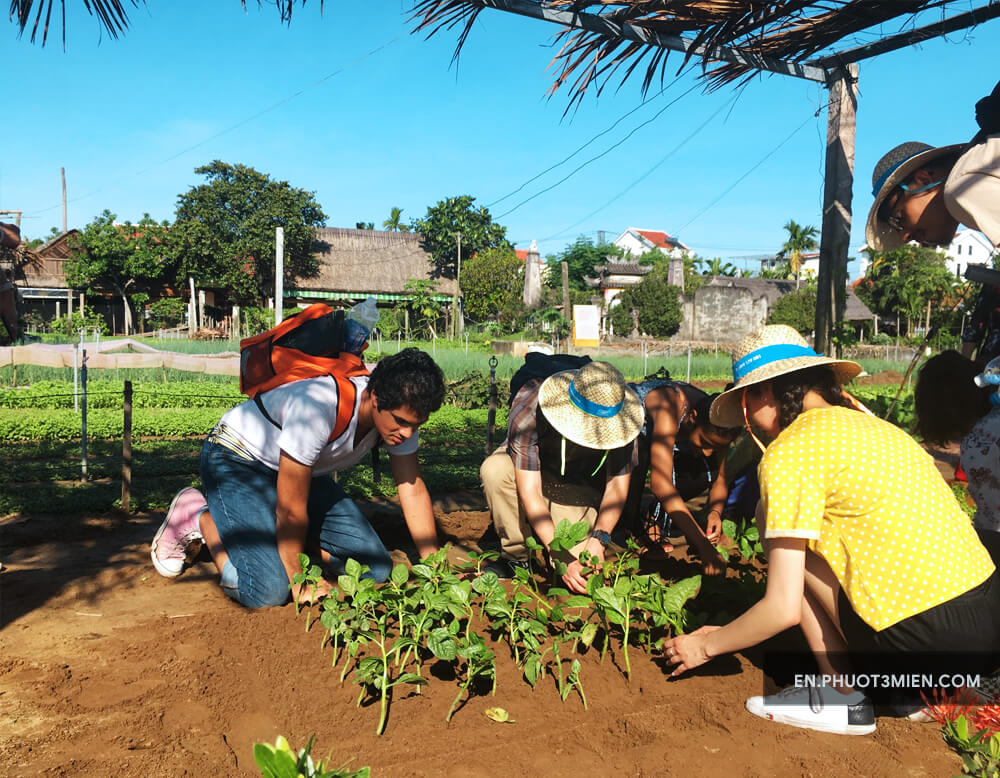
But did you think you’re only gonna observe what’s going on? No, you’re actually gonna partake in some farming activities, so get ready to get a little down and dirty. Why don’t you try your hand at watering the plants, the traditional Vietnamese way? The locals will make the process look very simple as they balance the two buckets on a bamboo pole over their shoulders effortlessly. But you will soon realize how incredibly difficult it can be. After watering some plants, you can help pick some ripe veggies from the ground. Don’t be afraid to get muddy! And guess what? We’ll be eating these for the meal, so make sure you pick the good ones!
After you satisfy that inner farmer in you, it’s time to get back on those bicycles again. As you peddle your way through the green and clean paddy fields, the fresh breeze will certainly be welcome after getting a little sweaty. You’ll feel quite alive, and it will be the perfect moment to take in your peaceful surroundings and enjoy your pollution-free escape from the bustling city. And hey, don’t forget to snap that perfect Instagram picture. What’s wonderful about Tra Que village is that it doesn’t just provide the perfect backdrop for a picture, but from the early morning to late afternoon, the different forms of lighting will let your creativity and imagination run wild. Tra Que is undoubtedly the best place to photograph the sunset in Hoi An, so don’t miss out on this.
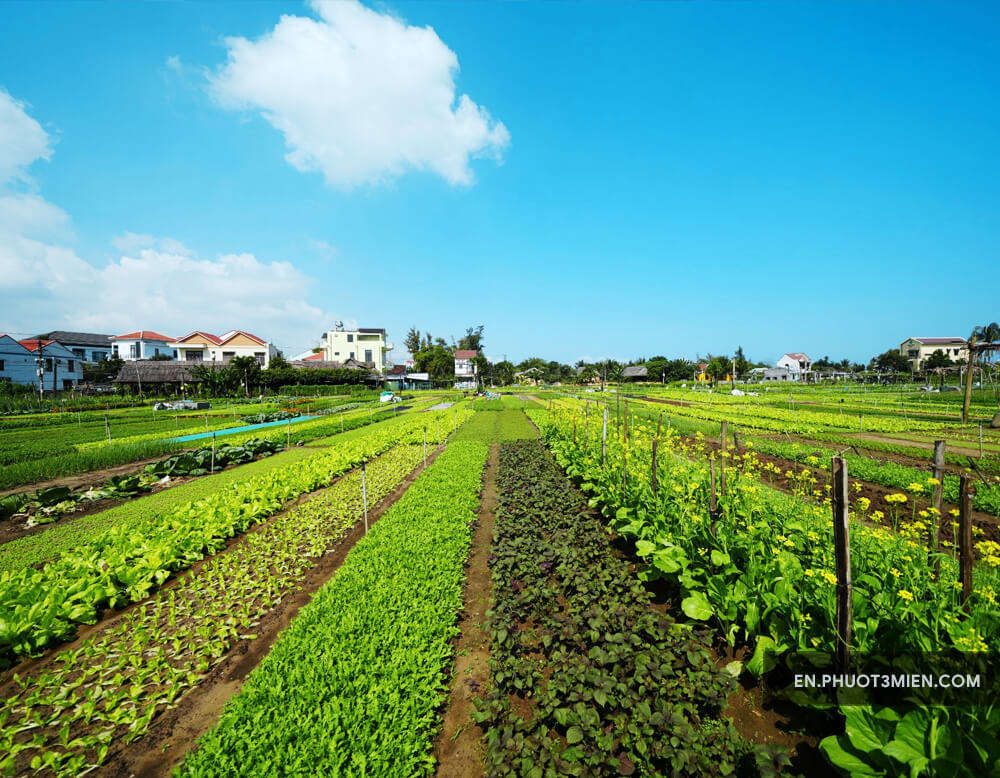
Next on your itinerary is water buffalo riding
Yes, you read that right. Buffalo riding is a part of a Vietnamese childhood in the countryside. The water buffalo is a very friendly and gentle animal, and back in the day used to be the main working force for the farming industry. Locals used water buffalo to plow the rice fields before plantation and to pull wagons full of farming products and harvested crops. While there is now more modern and efficient technology, it’s difficult to apply such automation in Vietnam due to its topography.
Most fields are located on hills or mountains and due to their small sizes, water buffalo are still favored in these areas where neither humans nor machinery can move as easily through the deep, sticky fields. The advantages of using water buffalo are endless and in addition to providing labor, their manure can also be used as fertilizer. In Tra Que however, the farmers stick to using the seaweed and algae found in the river and lagoons around.

If you’re worried about getting close to the buffalo, don’t be. They are used to having people around. Just take it a step at a time, and treat it like you would treat any other animal. They really are very gentle creatures. Once on, try navigating the buffalo yourself, but if you need help, we are right there with you. Just enjoy your moment as the buffalo peacefully grazes. Remember to take pictures and if you want, you can try to get a selfie with the buffalo!
Your farming lesson will continue after you finish your buffalo ride
You will carry on cycling through the paddies and soon enter a beautiful corn field. You will also get to watch and learn about peanut farming. We’re sure you love eating peanuts but did you ever think of how they grow? Well here’s your opportunity to know.
A little more cycling and then it is break time. During your break, you will visit a local’s home where you are able to sit down with the family and have some cold beer (or water) with them, shielded away from the sun. Vietnamese hospitality is unmatched – ever so welcoming and always so helpful. This is your opportunity to talk to the farmers, learn about their life, how they make a living, what their day to day activities are. You can even learn some Vietnamese words if you like! Don’t be afraid to be friendly. The locals are eager to learn about other cultures and even more eager to share their own with the rest of the world.
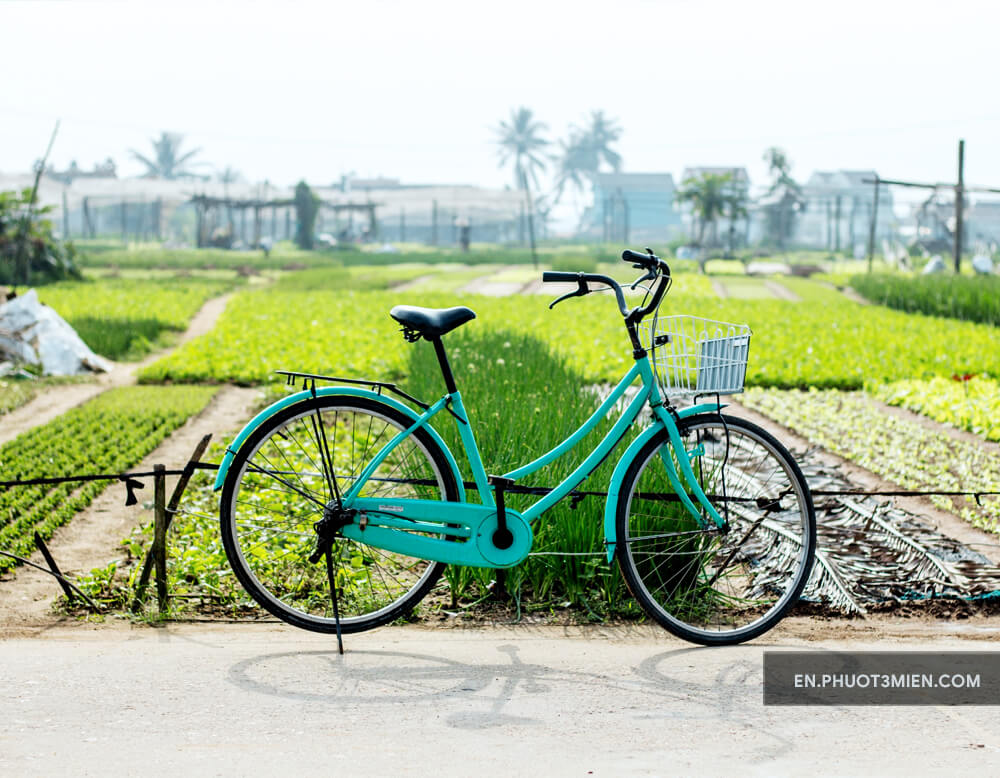
The grave of Tani Yajirobei
After you’ve caught your breath and had the chance to properly interact with the locals, it’s time to get back on the bike again. Savor the beauty of the landscape that surrounds you as you paddle over to your next destination – the grave of Tani Yajirobei, a Japanese merchant who died in 1647. Japan and Vietnam have a long history. Many Japanese businessmen stayed in Hoi An over 400 years ago when the port town was a well-known trading center. It is said that Tani Yajirobei, a businessman, fell in love with a local Vietnamese woman.
He was called back to Japan following a ban issued by the Emperor on overseas business, however, he returned to Hoi An in an effort to find the woman he fell in love with. Unfortunately, he fell sick and died. He was buried right in the middle of the fields, with his tomb facing northeast towards his homeland in Japan. There are many remnants of the Japanese left in Vietnam, as is evident with certain architecture and culture you can see that has been preserved for over a century. The Japanese bridge in the Ancient Town is one of them.
Finally, it’s time to peddle away from the beautiful greenery of the paddies and head towards the De Vong river. Here you will stop at another local home and hand over the veggies that you picked yourself! And then we leave. But don’t worry, we will be back, but we need to catch another important ingredient first.

End of tour Tra Que Vegetable Village
Your last adventure before having your meal would be to get on a wooden sampan and flow along the De Vong river. A sampan is a simple wooden fishing boat used by locals to catch fish. A common sight in Tra Que village is to see fisherman using traditional net traps to catch fish as they row along the river on a sampan. So earlier, you tested your farming skills. Now it is time to bring out that inner fisherman. Throw the net trap over the side of the boat as the fisherman paddles you along the river and wait patiently to see if you get lucky. Once again, the locals make it look super easy and effortless, but really, it’s not. So, don’t worry if you are not able to catch any fish.
A few peaceful moments later, we will return back to the home where you can finally sit down, rest, and eat. It’s time you fill that belly up with healthy veggies you picked all by yourself. You will have a typical family-style Vietnamese meal with many dishes you can pick from. Meals in Vietnam are not only about the food, but about the company, and you will share this feast with smiles, stories, and laughter. Your meal also comes with a view. Bask in the glorious river backdrop as you taste the flavors of Hoi An, and think of the amazing day you just had, and the amazing people who made it what it was. These are beautiful memories to reminisce about for years to come. Take all the magic back home with you, share it with your loved ones and spread it to the rest of the world.
Here are a few more ideas about articles you’ll want to read up on before visiting the amazing village of Hoi An:
